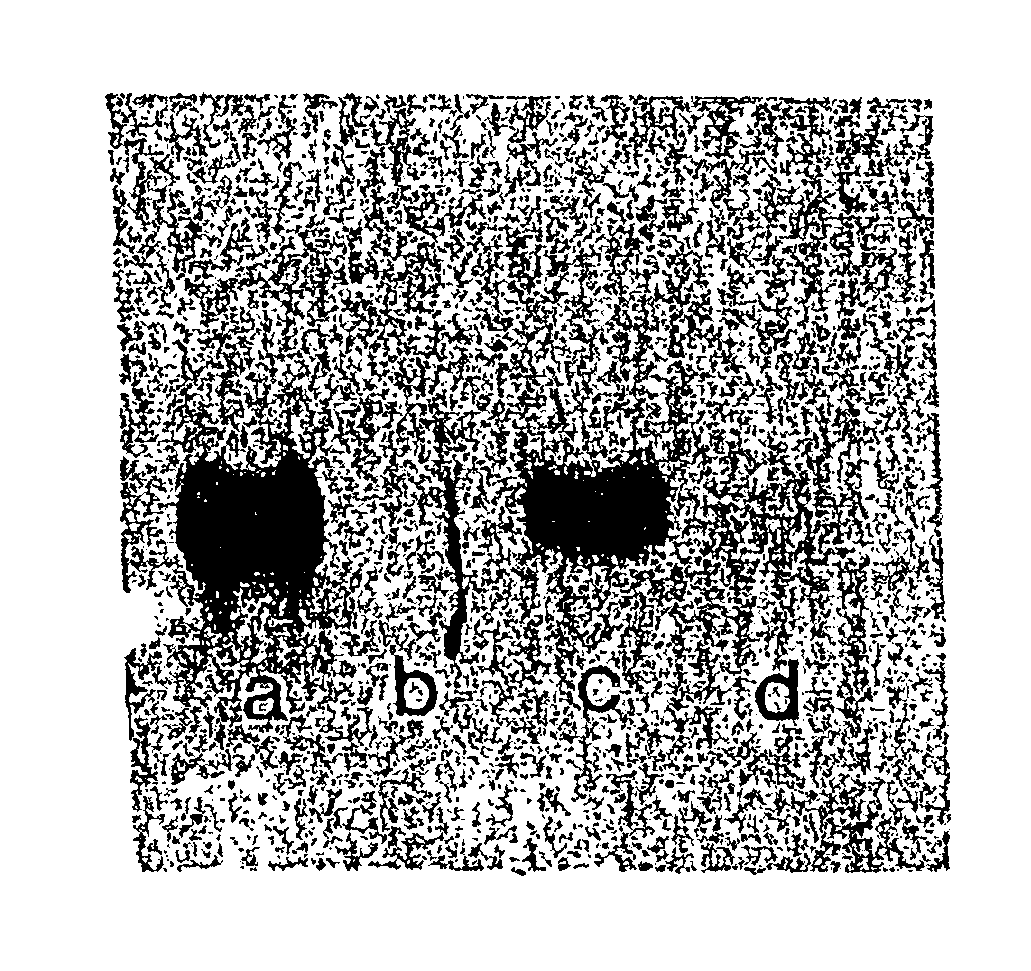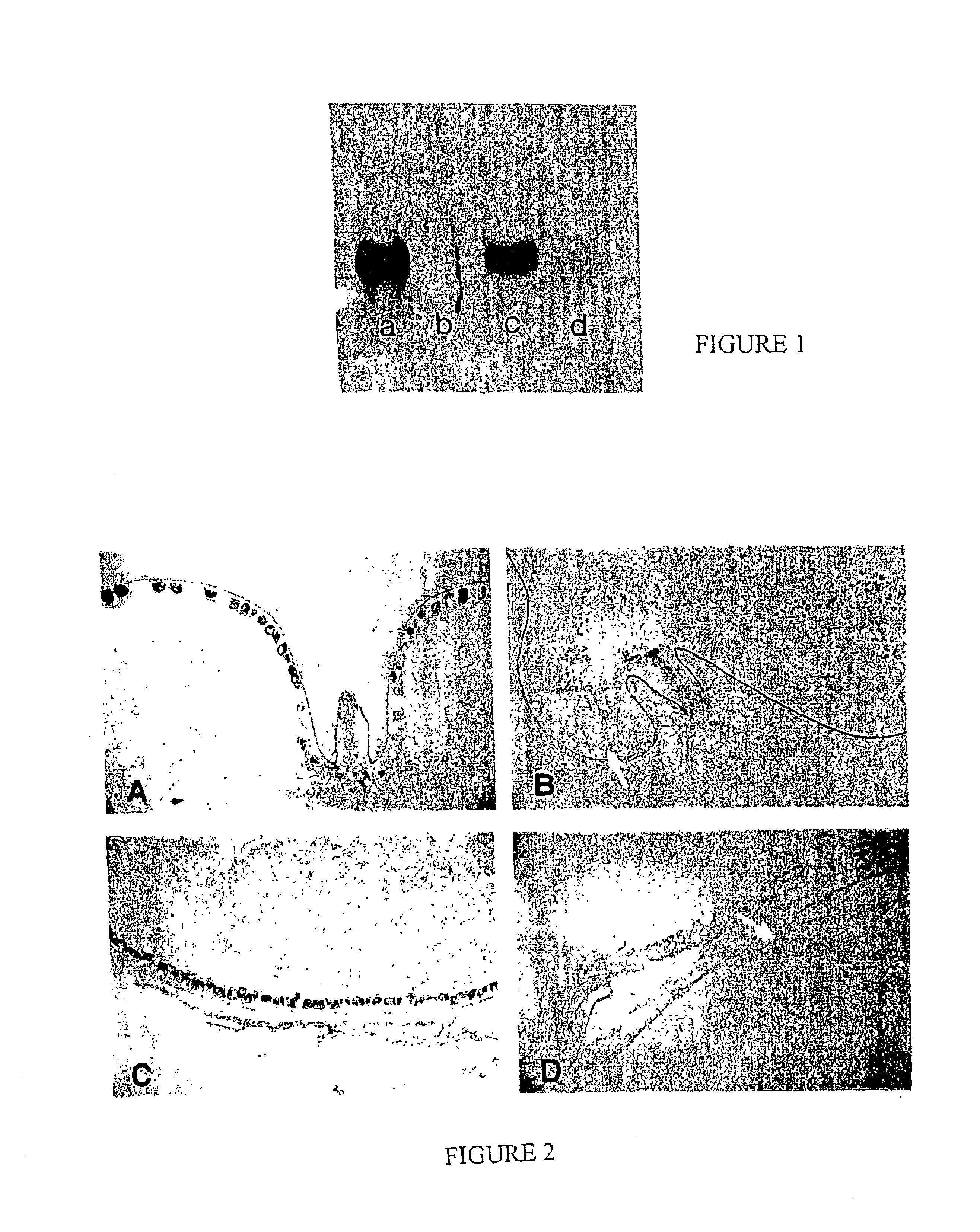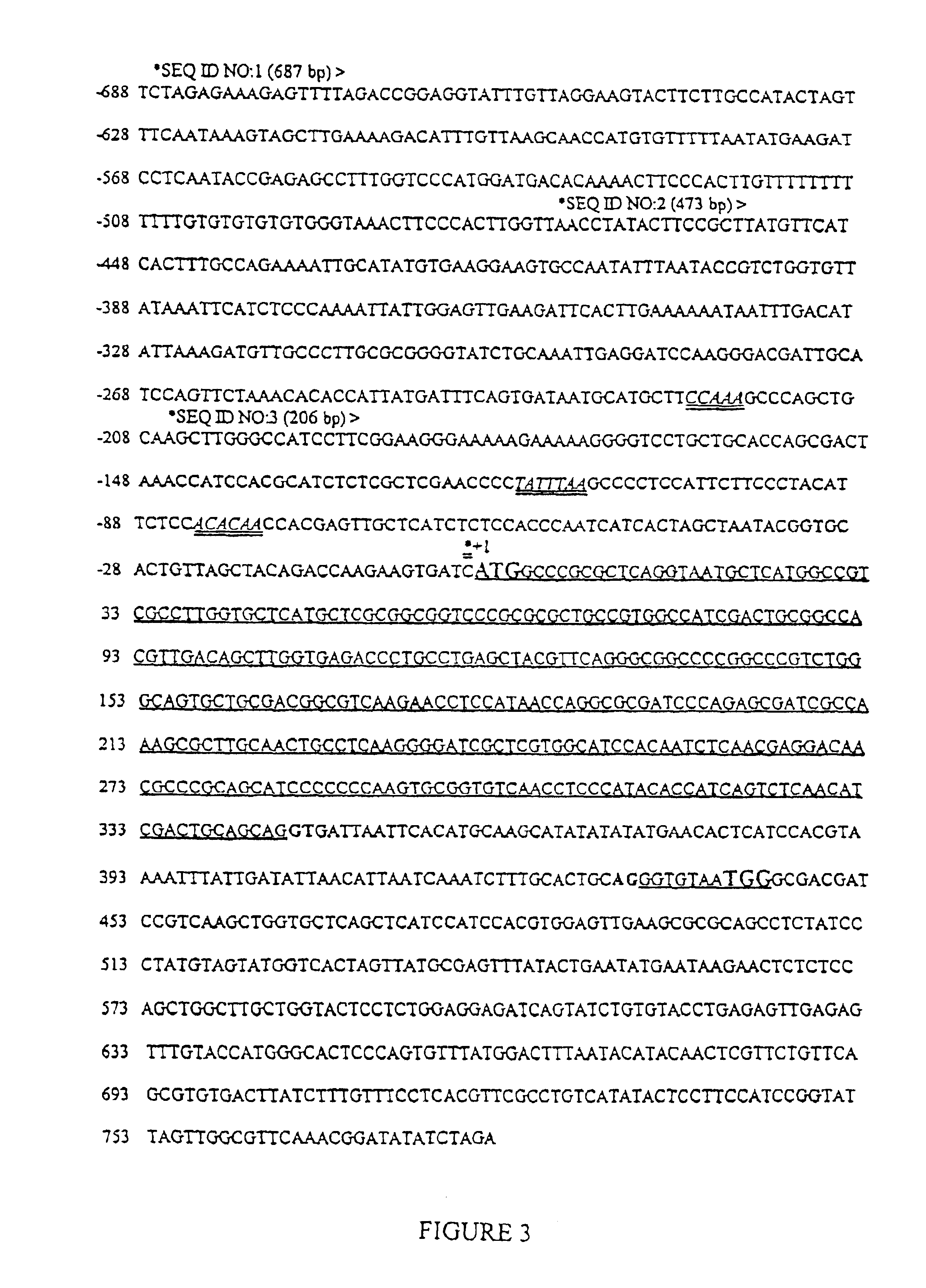Regulatory region of a lipid transfer protein (LtpW1) from aleuron tissue of wheat
a technology of lipid transfer protein and aleuron tissue, which is applied in the field of gene regulatory regions of plants, can solve the problems of not uniformly identifying genes in the terminology used
- Summary
- Abstract
- Description
- Claims
- Application Information
AI Technical Summary
Problems solved by technology
Method used
Image
Examples
example 1
Localization of Ltp1 Expression
[0085]In order to isolate genes which are functional in aleurone of developing and germinating wheat grain, a barley cDNA probe of an aleurone specific lipid transfer protein gene (Ltp1,) was used to indicate activity of similar genes in wheat aleurones during seed development. Northern blot analyses using a DIG-labelled barley cDNA probe showed that Ltp transcripts were present in aleurone tissue 20 dpa (FIGS. 1(a) and 1(c)). No activity was detected in early wheat grain development, 10 dpa (FIG. 1(b) but could be detected in T. turgidum (FIG. 1(d)).
[0086]In situ hybridization (based on a modification of the procedure outlined in Cox and Goldberg, 1998, Analysis of Plant Gene Expression, In Plant Molecular Biology. A Practical Approach, pp. 1-34) performed on cross sections of developing and germinating grain showed that Ltp expression was limited to aleurone cells. A 35S Ltp antisense ribo-probe hybridized strongly to aleurone cells (FIG. 2(a)), wher...
example 2
Genomic DNA of LtpW1
[0087]Genomic DNA was isolated from young leaf tissue of hexaploid wheat, (T. aestivum) and digested with XbaI. When this DNA was analysed by Southern blot using standard procedures and a DIG-labelled barley Ltp cDNA probe, three loci for the Ltp1 gene (at 1.5, 6.0, and 7.0 kb) were detected. The copy corresponding to the 1.5 kb XbaI band was cloned by screening a λ long C phage library of size-restricted XbaI fragments with a barley Ltp1 cDNA probe.
[0088]LtpW1 refers to the Ltp gene contained within the 1.5 kb XbaI digested T. aestivum genomic clone, the sequence of which is shown in SEQ ID NO: 4 (also see FIG. 3).
[0089]The coding sequence of LtpW1 shares 85% DNA identity with the barley Ltp1 (FIG. 4(a)), includes a 26 amino acid transit peptide for cell wall localization of the protein, and has one predicted 88 bp intron which is 44 bp shorter than the equivalent barley intron. The nucleotide sequences LtpW1 and barley Ltp 1 promoter (Linnestad 1991) are well c...
example 3
Expression of GUS Under the Control of LtpW1 Aleurone Regulatory Regions
[0091]p687LtpW1-GUS
[0092]A 687 bp XbaI / BcII regulatory region fragment (SEQ ID NO: 1; FIG. 3) was subcloned from pLtpW1 and fused to a GUS promoterless reporter cassette (pLC-GUS). pLC-GUS was obtained by removing the 35S promoter as a SacI fragment from pZO1016 (designated p35S-GUS herein), which was a gift from R. Sinibaldi, Sandoz, Ca. A 687 bp XbaI / BcII fragment was isolated from pTALP1 (containing the 1.5 kb XbaI-digested T. aestivum genomic clone) and the sticky ends were filled-in with Klenow fragment of DNA polymerase. This fragment was blunt-end ligated into the SmaI site of pLCGUS (see FIG. 5(d)), and the orientation of the insert was checked by digesting with BamHI. The activity of this regulatory region was compared with that of the promoterless construct (pLC-GUS) as well as to constructs comprising constitutive CaMV35S and rice action promoters (see FIGS. 6(a) and (b), respectively). These construc...
PUM
| Property | Measurement | Unit |
|---|---|---|
| pH | aaaaa | aaaaa |
| pH | aaaaa | aaaaa |
| pH | aaaaa | aaaaa |
Abstract
Description
Claims
Application Information
 Login to View More
Login to View More - R&D
- Intellectual Property
- Life Sciences
- Materials
- Tech Scout
- Unparalleled Data Quality
- Higher Quality Content
- 60% Fewer Hallucinations
Browse by: Latest US Patents, China's latest patents, Technical Efficacy Thesaurus, Application Domain, Technology Topic, Popular Technical Reports.
© 2025 PatSnap. All rights reserved.Legal|Privacy policy|Modern Slavery Act Transparency Statement|Sitemap|About US| Contact US: help@patsnap.com



